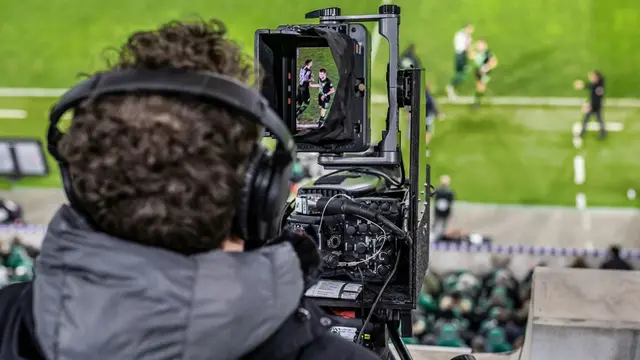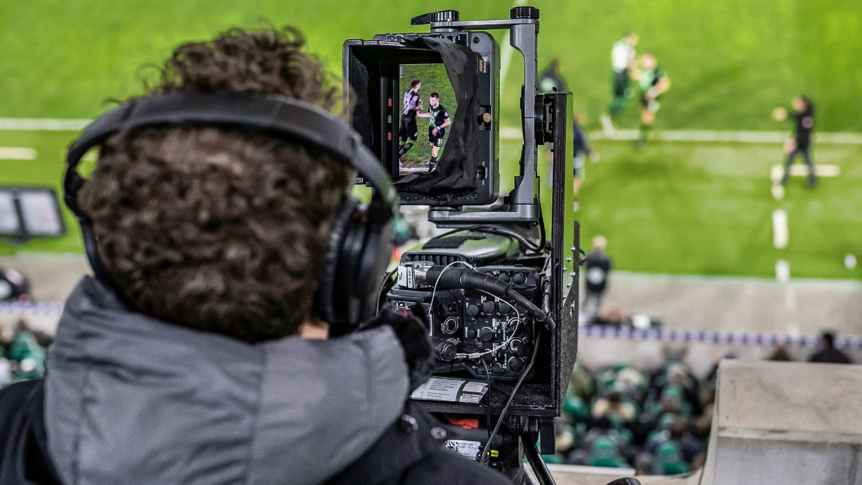
Bundesliga's cinematographer shoots a game by vertical format. /Courtesy of DFL
The German football league Bundesliga's organizer, DFL Deutsche Fußball Liga (DFL), has started to test producing games in 9:16 vertical format, to meet the trend of vertical video consumptions on mobile phones and social media.
DFL says it is the first sports league in the world ever to have had such trials to film high-resolution vertical footage with professional cameras, responding to the changing viewing behaviors of the audience.
The first test was carried out during a Bundesliga game between VfL Wolfsburg and SV Werder Bremen on the first weekend of December 2019, at Wolfsburg's home stadium, Volkswagen Arena.
DFL added five professional cameras in the stadium, with the cameras tilted 90 degrees to the left and staged on special tripods made for the test, to capture vertical footage. They set up a separate control room where some regular monitors were rotated 90 degrees.
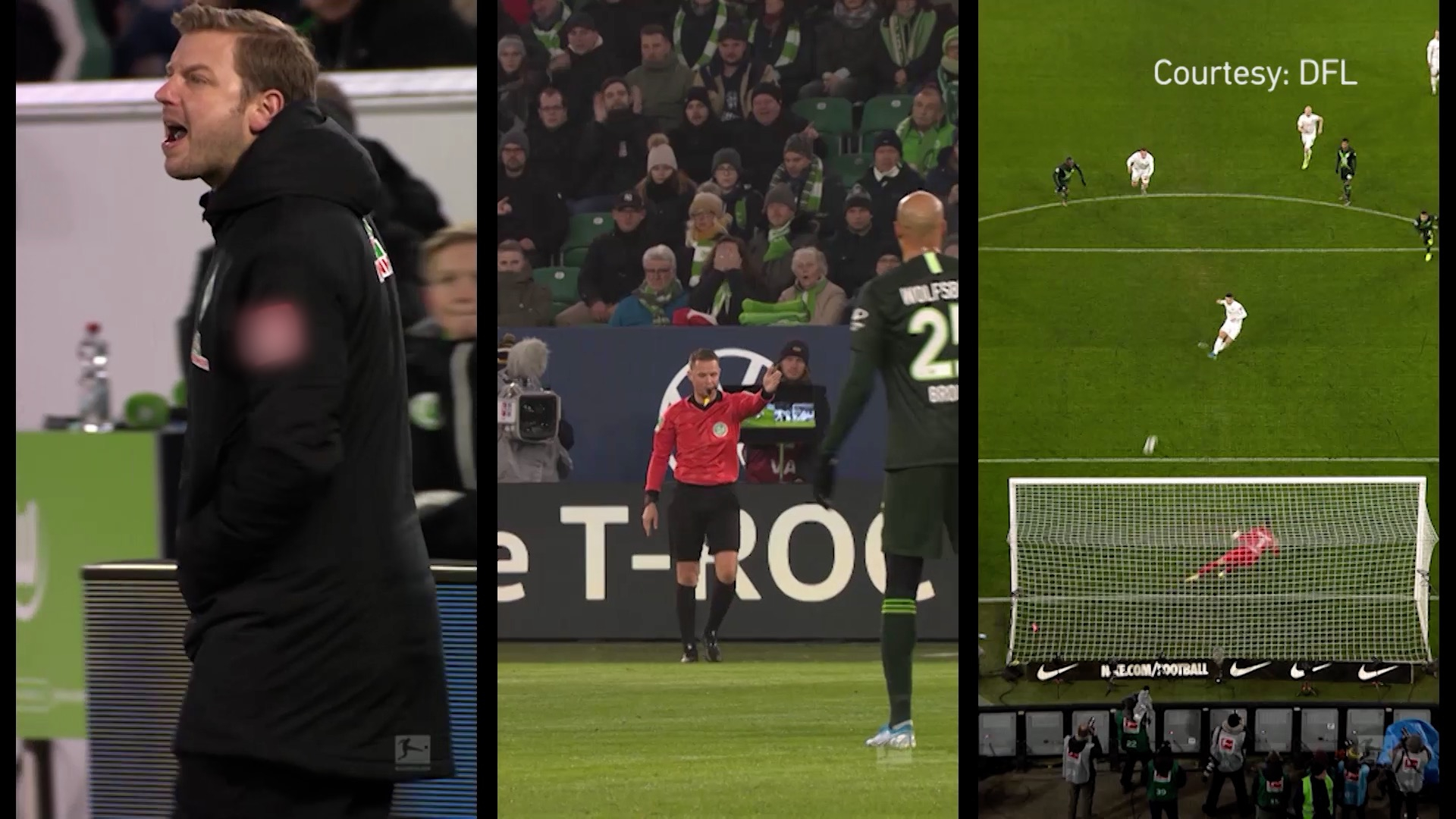
Images from a Bundesliga 'vertical' game /Courtesy of DFL
No new hardware was used for the test, except for the tripods that were built specifically to hold the tilted cameras, DFL told CGTN. A separate production team was organized to film the vertical footage, and live production was adjusted a little bit.
The vertical highlight videos produced were posted on Instagram and Facebook for fans to watch.
"We got very positive feedback … the comment, the likes, and the reach: over 150,000 video views within 24 hours … Now I think it's over half a million views over time," says Andreas Heyden, Executive Vice President, Digital Innovations, DFL Group, to CGTN.
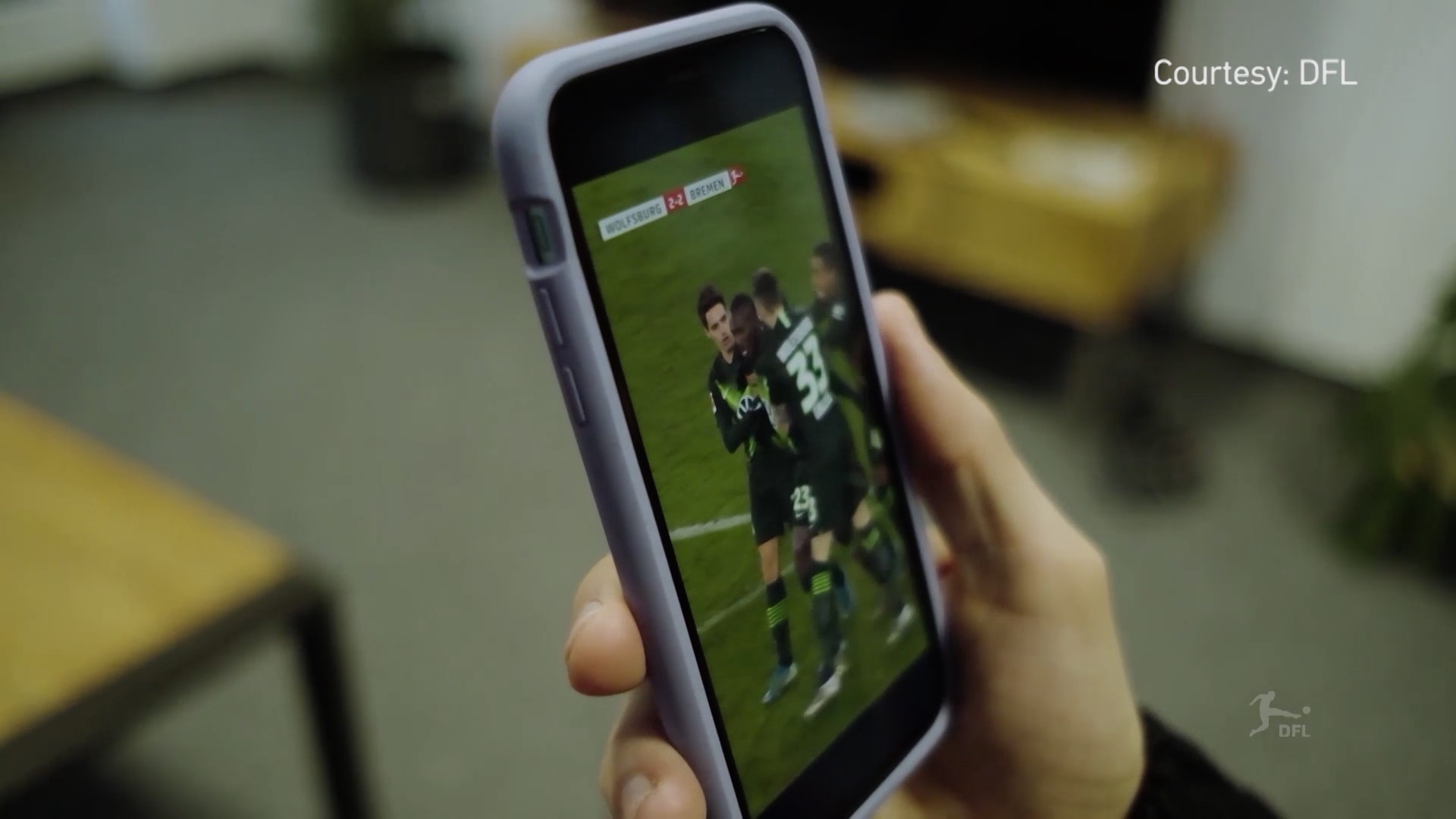
How 'vertical' game looks like on a phone /Courtesy of DFL
Heyden said the purpose was to test whether and how it could be done.
"Over 50 percent of all our video views are done in a vertical way. They are done in Instagram stories and on Facebook. We see a tendency that vertical videos are getting a higher usage, a higher integration, and common among the young audience. So we asked ourselves, what are the technological possibilities to test this kind of content production."
"We decided to do a native vertical video production and not just cropping the pictures. Cropping the pictures means you have a normal TV game recorded horizontally. Then you cut 9:16 pieces to make it accessible for mobile users. We've seen these results were disappointing and that we have to do a native production."
"The effect was way better than cropping the pictures, and it was live," explained Heyden.
From coming up with the concept to delivery, the test was delivered within two months, said Henning Wenzel from DFL's broadcast production subsidiary, Sportcast, which was involved in the trial.
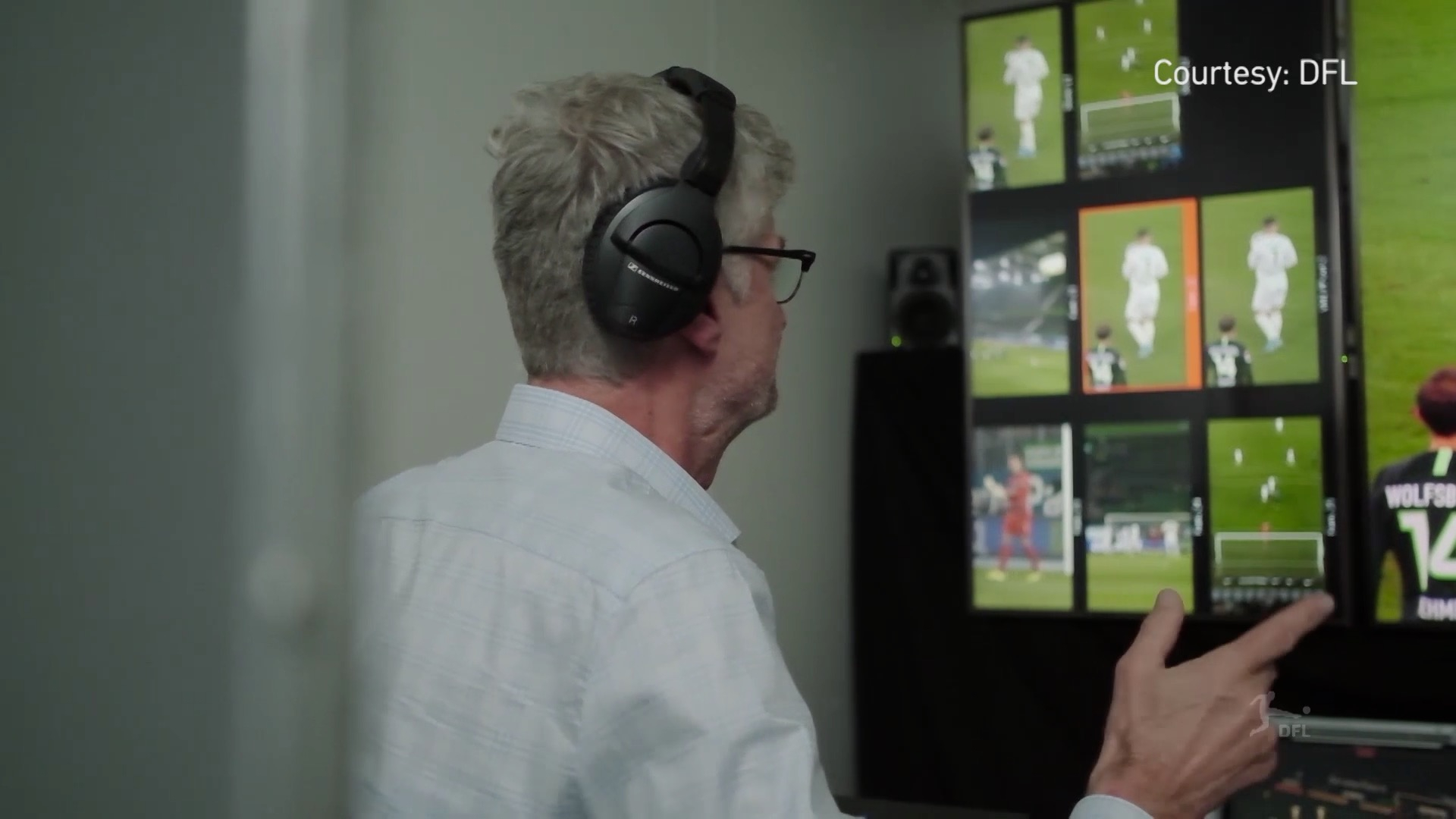
A live match director sits in front of the vertical format monitor screen. /Courtesy of DFL
DFL plans to show the vertical production at a sports trade fair in Duesseldorf at the end of March and will do further tests and discussions with its broadcasters through the next 15 months, to find out answers to various questions. For example, how audiences like to consume the vertical footage they produce, whether the broadcasters think it is appealing to their audience, and want to have regular vertical footage.
Heyden also revealed there would be a possibility to live broadcast games in 9:16 format in cooperation with their broadcasters. But it is still being discussed regarding doing such tests on OTT platforms.
Nevertheless, he thinks vertical production of game highlights is a definite trend.
"You see what these sports leagues are doing on Douyin. When you look at the videos, you can feel that they were cropped, not natively produced… the resolution, etc. So for highlights, yes, it would be a trend," he said.
As of the middle of January 2020, when Heyden had an interview with CGTN, the vertical highlights have not been posted on Chinese social media. There are yet no concrete plans for offering vertical highlights or tests for the Chinese market.
 简体中文
简体中文

